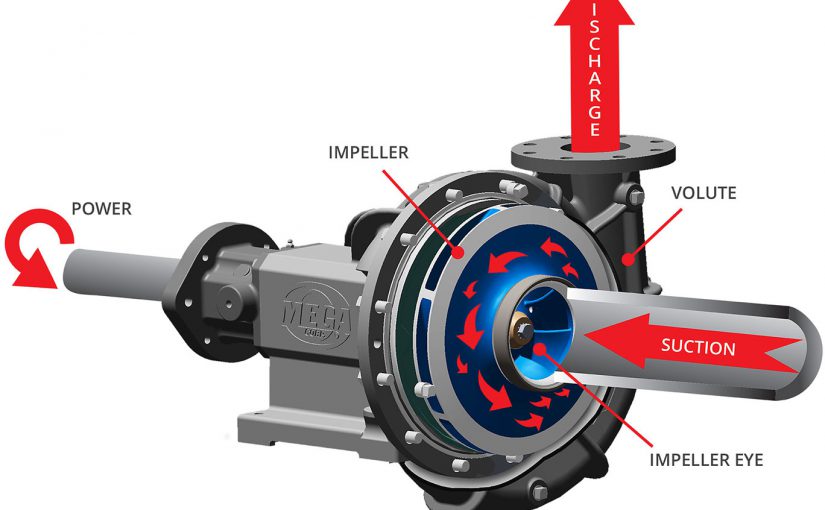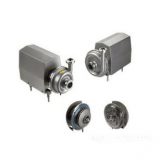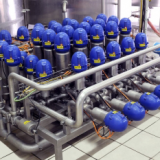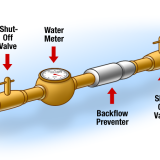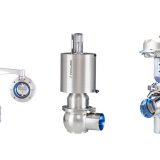A pump is a machine that transports or pressurizes a liquid. It transmits the mechanical energy or other external energy of the original motor to the liquid to increase the energy of the liquid. The pump is mainly used to transport liquids including water, oil, acid and alkali liquid, emulsion, suspended emulsion and liquid metal, etc., as well as gas mixtures and liquids containing suspended solids.
Water is of great importance to human life and production. In ancient times, there were all kinds of water lifting equipment, such as Egypt’s chain pump, China’s shadoof, and windlass and water trucks. In the 3 Century B.C., Archimedes invented a screw that steadily and continuously lifted water to a height of several meters, the principle of which is still used by the modern screw pump. Around 200 BC, the fire extinguishing pump invented by the ancient Greek craftsman Ctesibius was a primitive piston pump, which had the main components of a typical piston pump. However, the piston pumps only developed rapidly after the advent of steam engines.
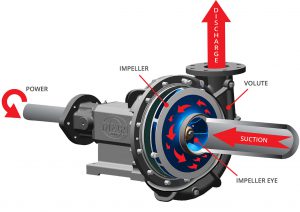
In 1840 ~ 1850, Worthington invented a piston pump directly operated by steam, which marked the formation of modern piston pumps. The 19th century was the height of the development of piston pumps, which were used in a variety of machinery such as hydraulic presses. Later, the low-speed piston pumps with limited flow were gradually replaced by high-speed centrifugal pumps and rotary pumps with the rapid increase of water demand from the 1920s. However, the reciprocating pump still occupies the main position in the field of high pressure and small flow, especially the diaphragm pump and plunger pump have unique advantages and their applications are increasing day by day.
The appearance of the rotary pump is related to the increasing diversification of industrial requirements for liquid transportation. As early as 1588, there were records of the four-blade slide pump, and other rotary pumps appeared successively. However, rotary pumps still had the disadvantages of large leakage, wear, and low efficiency until the 19th century. At the beginning of the 20th century, rotor lubrication, sealing, and other problems were solved and the high-speed motor drive was adopted. In this case, rotary pumps suitable for high pressure, medium and small flow and various viscous liquids were developed rapidly. The type of rotary pump and the type of liquid suitable for transportation are more than other types of pumps.
The idea of using centrifugal force to transport water first appeared in Leonardo Da Vinci’s sketches. Papin, the French physicist, invented a volute centrifugal pump with a four-blade impeller in 1689. However, the so-called Massachusetts pump with radial straight blades, semi-open double suction impeller, and volute casing, which appeared in the United States in 1818, is closer to the modern centrifugal pump. The invention of multistage centrifugal pumps with guide vanes in 1851 ~ 1875 made it possible to develop high-lift centrifugal pumps.
Although as early as 1754, the Swiss mathematician Euler proposed the basic equation of impeller hydraulic machinery, which laid the theoretical foundation for centrifugal pump design, it was not until the late 19th century, when the invention of the high-speed motor made the centrifugal pump an ideal power source, that its advantages were fully realized. Based on the theoretical research and practice of many scholars, such as Renault of the United Kingdom and Pfleiderer of Germany, the efficiency of the centrifugal pump has been greatly improved, and its performance range and the use of the field is also increasingly expanded, and has become a modern wide application, large output pumps.
Adamantvalves supplies all kinds of high-quality valves such as sanitary butterfly valves, sanitary ball valves, sanitary diaphragm valves, sanitary shut off valves, sanitary pumps, etc. Please visit http://www.adamantvalves.com/ for more information.
